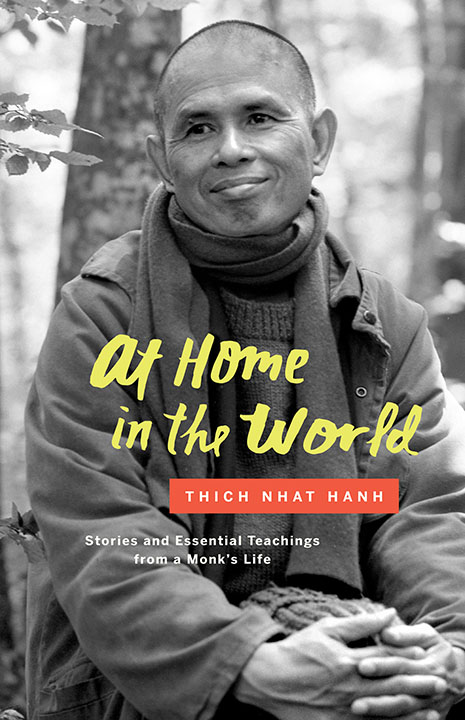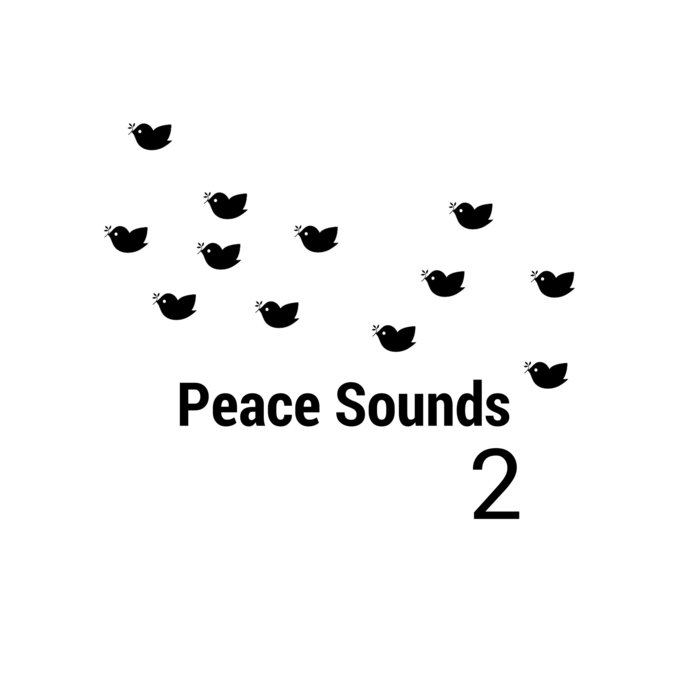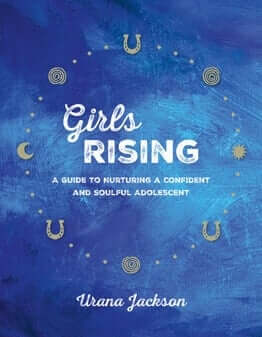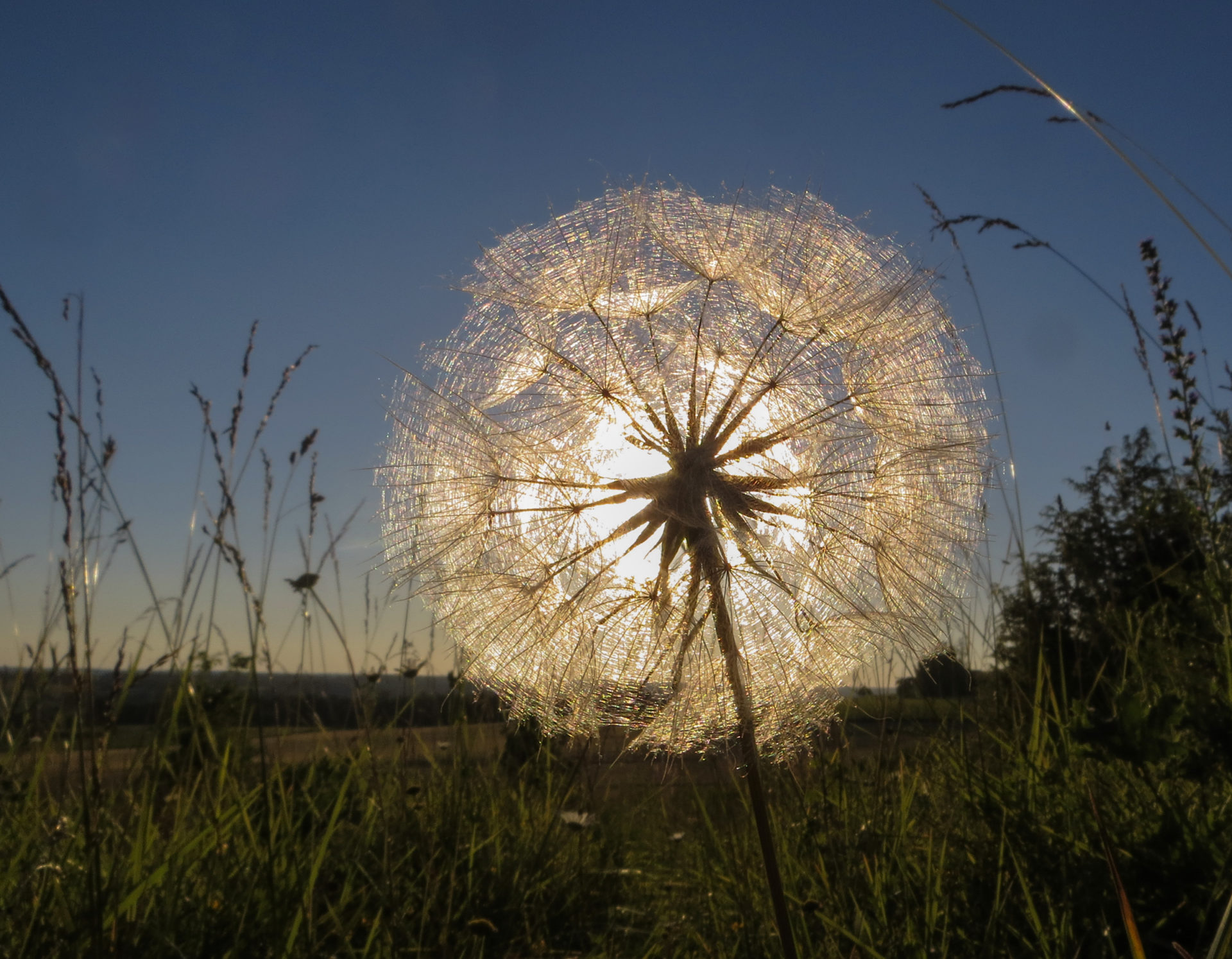
At Home in the World
Stories and Essential Teachings from a Monk’s Life
by Thich Nhat Hanh
Parallax Press
Hard cover, 187 pages
Reviewed by Karen Hilsberg
The title of Thich Nhat Hanh’s most recently published autobiographical book, At Home in the World, refers to the profound insight that Thay gleaned when he was in exile as a result of calling for peace during the Vietnam War.

At Home in the World
Stories and Essential Teachings from a Monk's Life
by Thich Nhat Hanh
Parallax Press
Hard cover, 187 pages
Reviewed by Karen Hilsberg
The title of Thich Nhat Hanh’s most recently published autobiographical book, At Home in the World, refers to the profound insight that Thay gleaned when he was in exile as a result of calling for peace during the Vietnam War. He was not allowed to return home and had to find a way to be at home wherever he was. He writes, “I have to admit that the first two years of exile were quite difficult. Although I was already a forty-year-old monk with many disciples, I had still not yet found my true home. I could give very good lectures on the practice of Buddhism, but I had not truly arrived.” He explains that through the practice of mindfulness, he eventually stopped suffering. “It was precisely because I did not have a country of my own that I had the opportunity to find my true home.”
Later in the book, he returns to this theme. “My true home is not in Plum Village in France. My true home is not in the United States. My true home is not limited to a particular place or time. My true home cannot be defined in terms of space or culture.” “Our true home is the present moment, whatever is happening right here and right now. Our true home is a place without discrimination, a place without hatred. Our true home is the place where we are no longer seeking anything, no longer yearning for anything, no longer regretting anything.” “Your true home is something you have to create for yourself … Home is not something to hope for, but to cultivate. There is no way home; home is the way.”
Thay’s storytelling is delightfully simple and clear, yet it rings with unforgettable truth and insight. The stories are grouped into five sections: Life in Vietnam, War and Exile, The Blossoming of Plum Village, At Home in the World, and I Have Arrived. Thay offers more than eighty vignettes about his life experiences, some of which have not previously been published. Certain stories will be familiar to practitioners, like The Hermit in the Well, My Master’s Robe, and Closing the Door. There are also new jewels, such as the one about the Day of Mindfulness that the Sangha offered at Googleplex in 2013. Thay notes that by introducing mindfulness practices to the employees of Google, he illustrated, “Time is no longer money. Time is peace; time is life.”
The text is punctuated with beautiful illustrations by Jason DeAntonis, award-winning artist.

Peace Sounds 2
by Wake Up London & Friends
Digital album, 2016
Reviewed by Augustin Brunault
Peace Sounds 2, produced by musician Joe Holtaway, is a new manifestation of Wake Up London’s vibrant spirit. In this beautifully handcrafted piece of work, each of the twelve songs is personal and a fruit of love. Hearing the beauty of the whole, I recall Tagore’s prayer in Gitanjali: “Only let me make my life simple and straight, like a flute of reed for thee to fill with music.”
Like its predecessor, this album supports Sangha building, for music has the power to reveal the universal in us and to unite us around core values. Peace Sounds gave birth to beautiful testimonies; one Sangha member said he felt a sense of belonging in it, and it helped him to connect spiritually with his brothers and sisters and resist the pressures of daily life. With this new collection, a lot of good seeds in us are being watered as well, like joy, reverence for nature, and understanding.
Peace Sounds 2 welcomes us with “Wake Me,” a sumptuously arranged instrumental soundscape by Message to Bears, project of Jerome Alexander. True to its title, its peaceful vibes act like the rising sun, slowly making life pulse in every vein of our bodies. We can let go and delightedly surrender to a wider sense of reality. But just as sunshine uses every nuance of the color spectrum, music needs a wide range of personal styles to attain its full potential. That’s why it works so well here for Luke Concannon’s deep-rooted vocals to
mix with Flo Perlin’s joyfully contemplative “Gift,” and for word artist Nimo Patel’s powerful flow to coexist with the more ethereal “Pan Jam” by Kareem Ghandour. Not to mention “Let Your Heart Burn” by Rosanna Lea, an interfaith exhortation to loving kindness inspired by the words of a Baha’i teaching. The album contains many other jewels I’ll let you discover.
I remember the first time I saw Joe Holtaway, who produced this album. He was kneeling on the grass, playing his guitar, face to the open sky. I was deeply moved by the way he was living his music—not as something exterior he had to “deliver,” but naturally from within, with all his body and soul. May we all, in our turn and like the twelve little birds on the cover of the album, become instruments of joy and peace for the greater body of which we’re a part.
Peace Sounds 2 is available for streaming and download at peacesounds.bandcamp.com. The creators of Peace Sounds 2 can offer download codes for a song from the album; to make a request, send them an email at info@peacesounds.org.
All proceeds go to the Wake Up London community, which depends on donations to support its mindfulness sessions.

Girls Rising
A Guide to Nurturing a Confident and Soulful Adolescent
by Urbana Jackson
Parallax Press, 2016
Paperback, 160 pages
Reviewed by Kaveri Patel, DO
In Girls Rising, Urana Jackson’s message is urgent and clear. Our youth have a yearning to explore their inner life and engage with the world in purposeful ways. Yet, we often don’t give them the voice to do so. When trusted and nurtured as valuable contributors to society, they become seeds of loving intentions and blossom into their true selves.
From page one, Jackson initiates me into the sacred circle of Girls Rising. As a parent and family physician, I learn what it means to be a girl rising from inside the circle, the center of myself. I feel safe, respected, and free to explore Jackson’s proposed curriculum for adolescent females (ages twelve to seventeen). I have permission to modify the curriculum as needed, based on my own work with this population.
Jackson divides her curriculum into four parts. Each section includes several group process exercises, a suggested musical selection, materials for the group process, and reflective questions for group discussion. Each section also contains a path for parents to explore this curriculum with their daughters.
In “Looks Within,” girls explore how familial, social, and cultural concepts of beauty and worth influence thoughts and emotions, ultimately impacting personal choices and actions. By naming emotions and giving them space, adolescents can feel empowered rather than entangled by their experiences.
In “Empathetic Attunement,” girls probe the edges of human vulnerability and common humanity through compassionate communication techniques. Jackson addresses the shadow side of empathetic attunement, and shows how becoming more aware of this shadow can free a girl to connect with others in meaningful ways.
In “Necessary Action,” girls learn about social injustices that females face throughout the world. The author explores what it means to be an inspired, creative feminine agent of change, based on skills, talents, and interests.
Finally, Jackson invites girls to experience “Sacred Living” concepts through mindfulness, nature, and gratitude-based practices. This section encompasses ancestral and spiritual stories, symbols, and intuition, as well as existential questions.
What I love most about this book is Jackson’s authenticity and humility. She hails from a multifaceted cultural and socioeconomic background, and has an impressive resume from working with girls and women for many years. Yet as a reader, I never feel intimidated. Instead, she inspires me to implement her strategies with adolescent female patients and with my own daughter.
May girls rise like wildflowers everywhere to nurture future seeds of interbeing, compassionate action, and peace.

